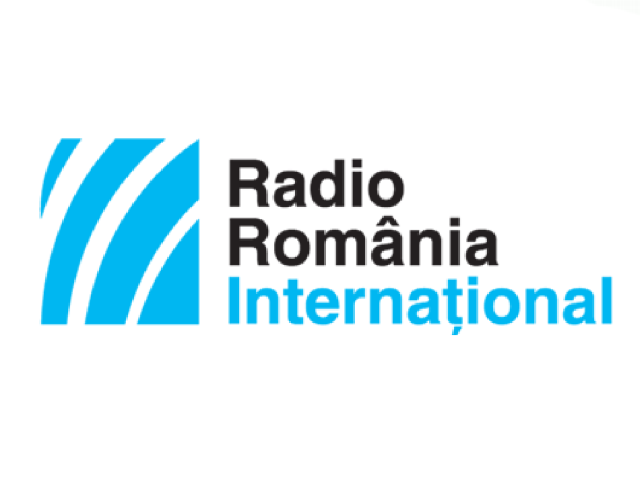In Transylvania you
are going to find fortresses and medieval castles, caves and salt mines,
breathtaking views and last but not least, traditional savoury dishes, which
gained international recognition along the years. The region’s tourist
objectives are so diverse and many that it would be impossible to visit them
all in just a couple of weeks. Today we’d like to take you on a journey to the
region’s major hotspots.
Our first stop
is in Alma Vii, an old village in a hilly region first documented around 1209.
The village is famous for its church, which was erected two centuries later and
was fortified in early 16th century. According to Mihaela Turk,
project manager with the Mihai Eminescu Trust Foundation, the fortress’ four
towers have been restored as part of a project funded by Norway, Lichtenstein
and Iceland.
Mihaela Turk: Each tower has its own theme. We have the Clock Tower, aka the Gate
Tower, the Lard Tower, the Ice Tower or the Grain Tower. We have tried to
restore these buildings according to their original function and nowadays they
can also host various events, such as mini-conferences or exhibitions.
In order to
fully experience the genuine flavour of Transylvania, accommodation in a
traditional house is a must. You will have the sensation that you are living in
an authentic museum, a time capsule. Here is again Mihaela Turk with more on
this issue.
Mihaela Turk: We don’t want to offer standard accommodation facilities like TV
sets, Internet, all the bells and whistles of modern accommodation. These rooms
are kept very simple with whitewashed walls and old pieces of furniture that
have been refurbished. They have wooden floors covered in traditional
multi-colour carpets. We have refurbished these rooms only with traditional
materials, like wood, stone, sand and lime.
Our journey
continues to one of Transylvania’s most developed cities, Cluj-Napoca, also dubbed
Silicon Valley, as this is where some of Romania’s best programmers are
working. The city is also known for the big gigs and events that it hosts all
throughout the year such as the Untold and Electric Castle festivals, or the
International Film Festival.
This is also
where the oldest cookery book in Romania, dating back to the 15th
century, has recently been re-edited. Tourists are impressed by the huge
variety of churches in Cluj. Here one can find on the same street several
churches, Reformed, Roman-Catholic, Greek-Catholic or Unitarian. Here is Marius
Oprea, a guide with the local Tourist Info Center with more on this marvelous
city in western Romania.
Marius Oprea:There are several
historical monuments such as the
Saint Michael Roman-Catholic Church, the Mathia Corvin statues, the Banffy
Palace, which houses the Art Museum, the Metropolitan Cathedral, the Lucian
Blaga National Theatre and of course the Museum Square. These are all located
in the city center within easy access on foot. The Fortress Hill is another
interesting place, which offers panoramic views of the city, then there are
also the ruins of the former Habsburg fortress, and the Botanical Garden, one
of the most visited places in Cluj. Also worth visiting is the Romului Vuia
Ethnographic Park, the oldest of this kind in Romania. Cluj-Napoca has always
been an open city, which can be visited any time of the year.
Marius Oprea has
extended an invitation for us to visit the other hotspots in the county as
well. Among these there is the Turda salt mine, one of the most visited tourist
objectives in Romania.
Marius Oprea: Most of the tourists who have made it to Cluj have also visited the
Turda salt mine as it is only half an hour drive from the city. This salt mine
is unique in Romania and maybe in this part of Europe. It is a former salt mine
with several levels, which has been recently restored with EU funds and
nowadays looks like a genuine underground city. It offers a series of
facilities both in terms of treatment and entertainment and visitors can even
drive a boat across an underground lake.
Transylvania is
also home to one of the very few inhabited citadels in Europe, Sighisoara.
Sighisoara citadel, also known as Schasburg, was included in the UNESCO world
heritage back in 1999. The most outstanding monument there is the Clock Tower,
which has hosted the town’s history museum since 1899. Nicolae Tescula, the
director of the museum, has more:
Nicolae
Tescula: The Clock Tower was built in
the 14th century. It hosted the town hall until the religious
reform, and it is 64 m high. A weathercock is guarding the town from top of the
tower, telling us whether it’s going to rain or the weather will be fine. Also
impressive are the figurines, like the drummers that tell the exact time. There
are also figurines symbolizing Justice, Peace and the Executioner. The
figurines that represent the days of the week change their position at
midnight. The mechanism is quite old, as it was built in 1906, but the first
clock mechanism ever documented in Sighisoara goes back to the 17th
century.
These are just
some of Transylvania’s landmarks that are definitely worth visiting. The list
is definitely longer, and we will present to you other attractions in the area
in the future editions of our regular feature.
(translated by
bill)
